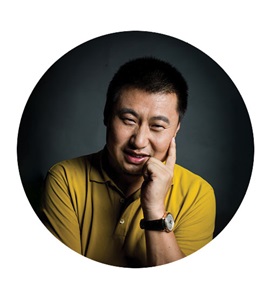The coronavirus pandemic and the Sino-US tech tension have added weight to the global shortage of semiconductors. As the world’s largest consumer of chips, China is rising to the challenge to emerge as the world’s top market for semiconductor manufacturing equipment.
Industry veteran Dr Li Wei, President of Shenzhen APTCHIP Microelectronics Co., Ltd, a national high-tech enterprise established in 2012, reckons that now is the time for the Chinese semiconductor industry to pick up, as China’s policymakers have emphasized technological “self-reliance” and unleased favourable policies to support the industry.
China's Semiconductor Industry is Growing from Strength to Strength
Li sees an explosion of demand in the semiconductor market this year and mentions that the number of his company’s orders has increased ten times. So far this year, they have received a total of 300 million orders.
“Sometimes we even had to turn down our business partners’ requests as we were already operating at full capacity,” says Dr Li who manages the chip production house with production volume among the largest in China.
In terms of the reasons behind the strong demand, Dr Li explains that semiconductors are the basis for every technology and the pandemic has increased the demand for consumer electronic products as people around the world moved to remote working and online learning amid lockdowns and social-distancing measures.
Li reckons that the chip business is counter-cyclical. He expects the strong demand for home appliances to continually foster fast growth of the semiconductor sector in the next ten years in China.
Shenzhen APTCHIP Microelectronics is well positioned to capture the huge opportunity. According to Li, the company focuses on the design and sale of high performance 32-bit microprocessors (MCUs), capacitive touch sensors and systems-on-Chip (SoCs). Its products have been applied in various areas, including consumer electronics, home appliances, smart home, industrial control security, medical health and automotive electronics. With high performance, low cost and low power consumption, its flagship APT32F series MCU won the Most Promising Product Award presented by the Ministry of Industry and Information Technology and the High-tech Product Award presented by China Semiconductor Industry Association in 2017.
With offices in Hangzhou, Shanghai and Hong Kong and its headquarters in Shenzhen, the company’s products are sold mostly in China and exported to overseas markets as well.
Presently in China, nearly 95% of chip products are imported from overseas and only 5% are produced domestically, according to Li.
Although the pressure was inevitable for the up-and-coming chipmaker, China turned the pressure into motivation and emerged as the world’s top market for new semiconductor equipment for the first time in 2020, surpassing Taiwan, South Korea and Japan, according to data from SEMI, a US-based industry association representing companies that supply equipment and materials to chip makers.
According to a SEMI report, mainland China saw annual sales of equipment grew 39% to US$18.72 billion in 2020, with Taiwan being the second-largest market with sales of US$17.15 billion, which was flat after a strong year in 2019.
The Chinese government has showered the domestic chip sector with favourable policies from tax rebates to state subsidies to fast track its semiconductor industry development.
China also aims to use more chips designed and produced by domestic semiconductor companies by 2025 to mitigate supply chain risks brought about by US trade sanctions.
Li highlights that the Shenzhen government has also been highly supportive of growing the semiconductor industry in the Guangdong-Hong Kong-Macao Greater Bay Area. But he says that despite the industry’s fast growth, China is around 20 years left behind the US in terms of semiconductor technology and we still have a lot to catch up.
Devoted to the High-tech Industry
Li slipped into the chip industry in 1998 when he left his first job as a civil servant in Inner Mongolia for Shenzhen, China’s Silicon Valley. It was six years after the Chinese revolutionary and statesman Deng Xiaoping’s southern tour.
Li recalls that when Deng first came to Shenzhen, there was only one main road – Shennan Main Road. It took the once sleepy fishing village of Shenzhen just four decades to turn into a thriving technology hub.
Li started his business in the chip industry and earned his first pot of gold in Huaqiang bei, one of Shenzhen's notable retail areas having one of the largest electronics markets in the world.
Thanks to the fast development of the city, Li’s efforts got paid off and his business took off. He started to invest in high-tech companies afterwards, starting from 2010. Shenzhen APTCHIP Microelectronics is one of his investees. He is also involved in virtual reality technology business where he is the President of Inlife-Handnet Technology Co., Ltd.
Talking about investment opportunities in the chip and virtual reality sectors, Li says there are still huge opportunities in chips, but given the long industrial chain, investors should have a good understanding of the technology and business, and be patient. As for VR, he thinks it is heavy assets driven, needs large capital expenditures and has high entrance requirements.
According to Li, some of the investee companies are preparing to get listed on the Shenzhen and Hong Kong stock exchanges, but the listing processes have been delayed due to the pandemic.
In 2015, Li chose to pursue a doctor’s degree at The Hong Kong Polytechnic University to increase his knowledge in the field. With research focusing on virtual reality technology, his doctoral thesis is entitled “Open Innovation Strategy Based Innovation Performance Model: An Empirical Study on the Situation of China’s VR Industry”. He reckons that the study at PolyU provided him with the opportunity to sublimate practices into solid theories to better facilitate real business.

